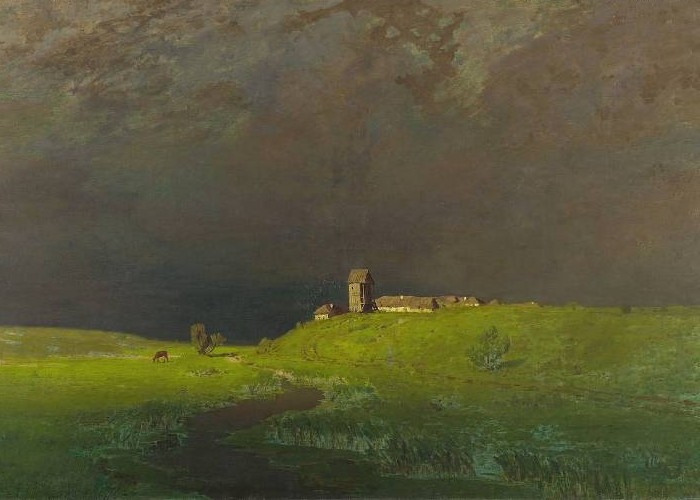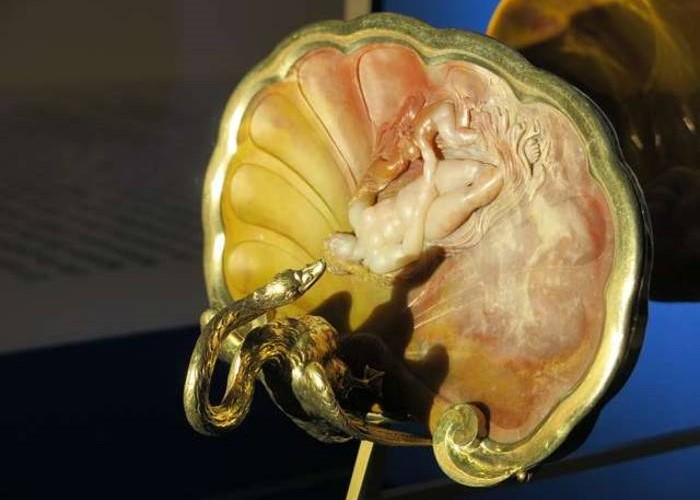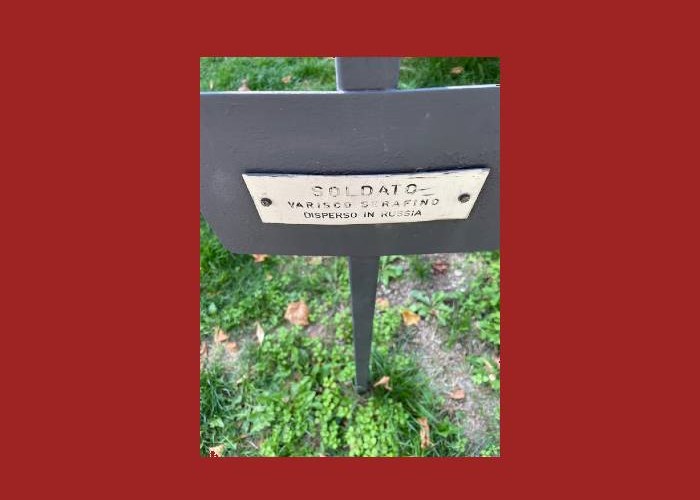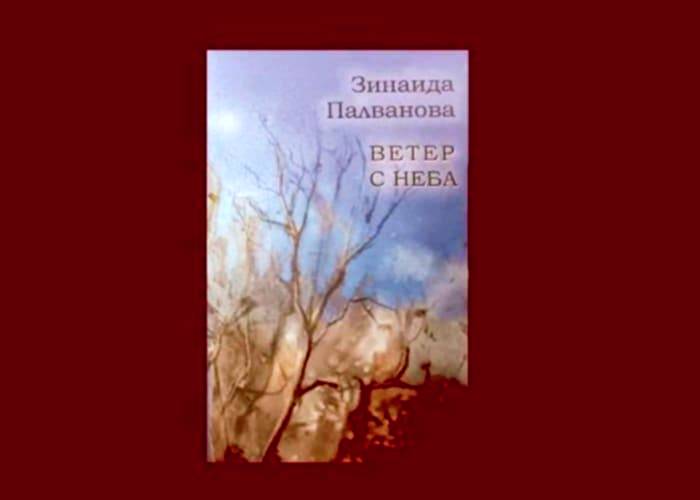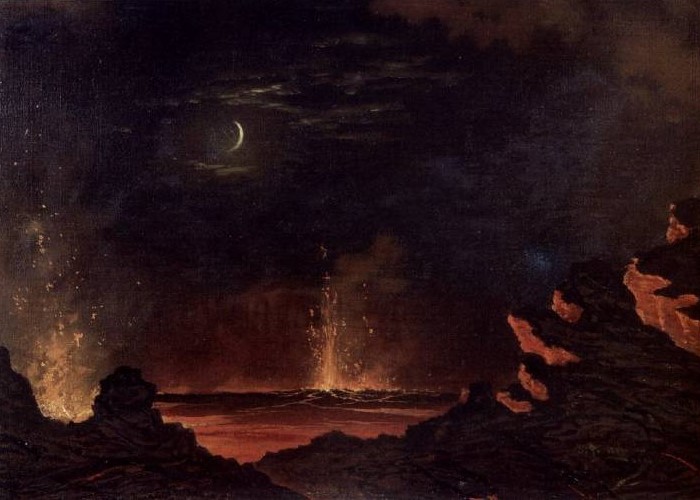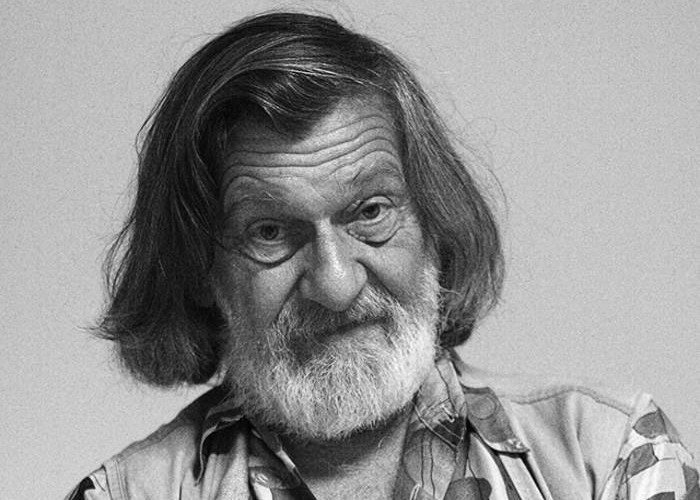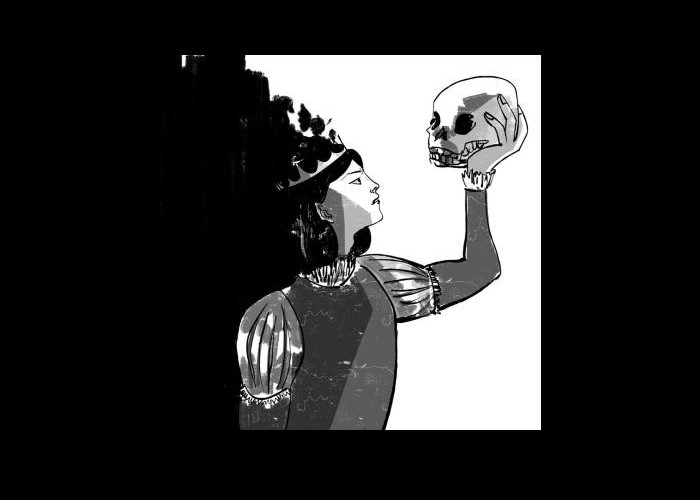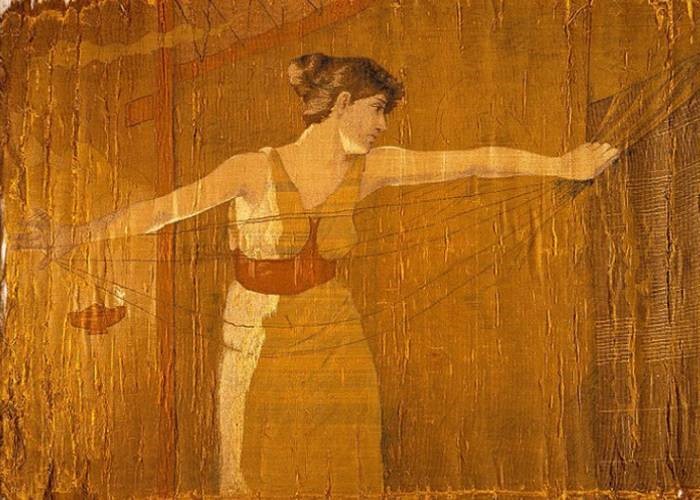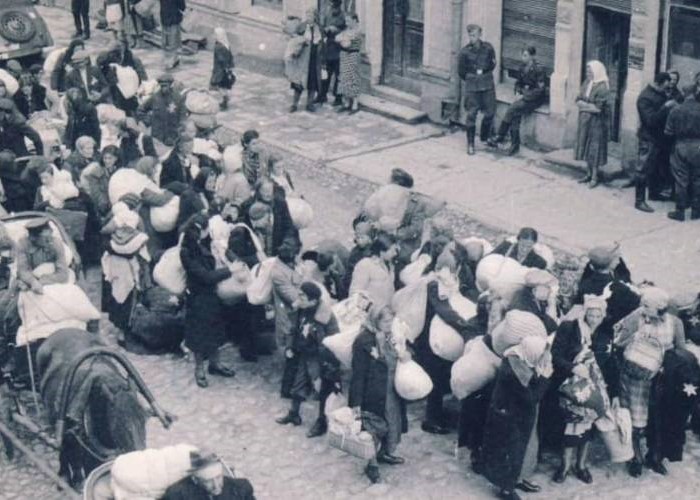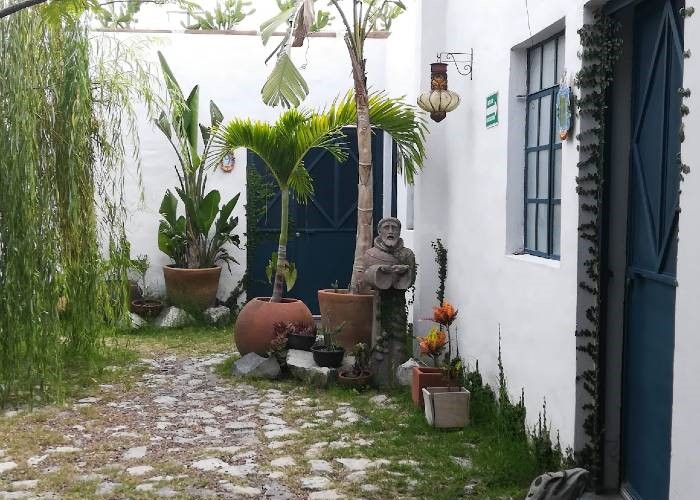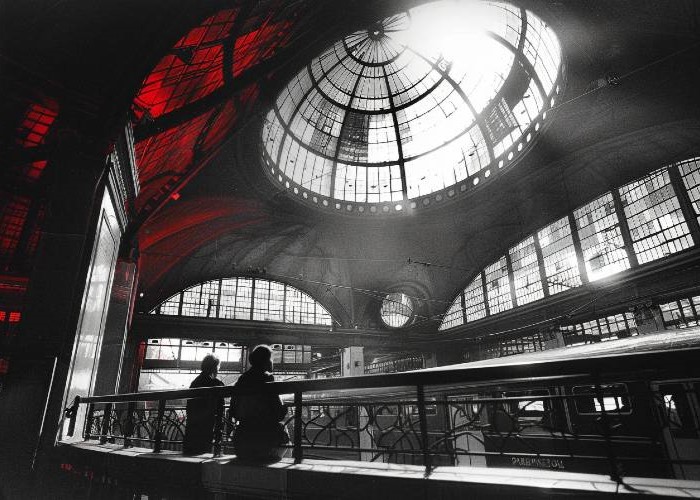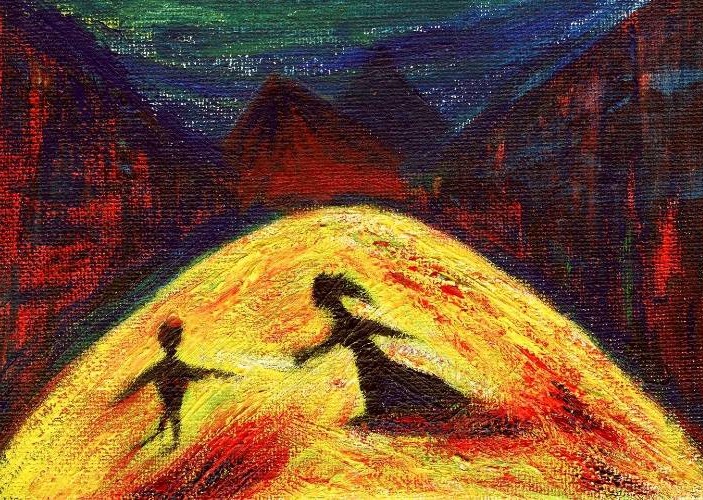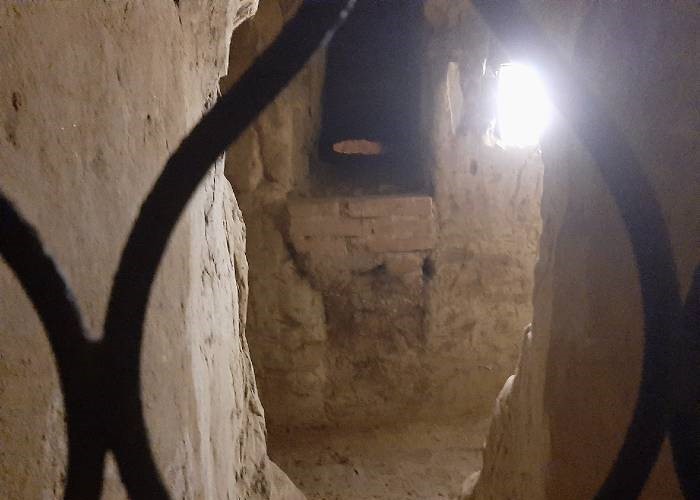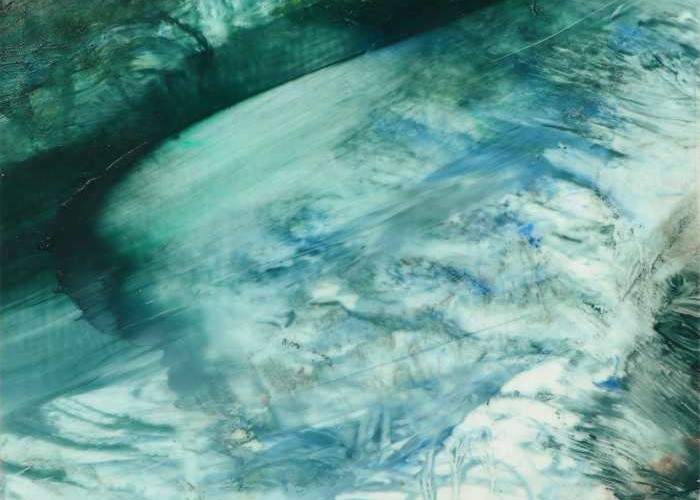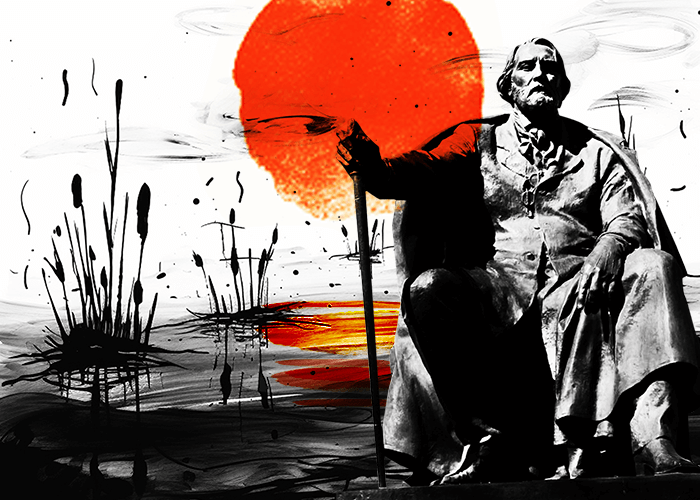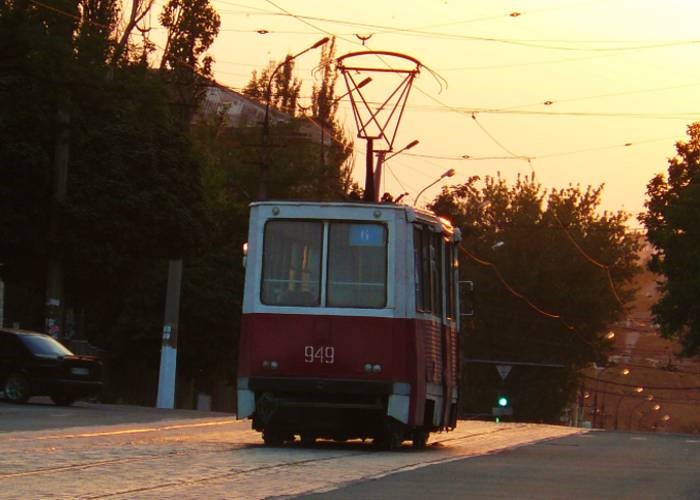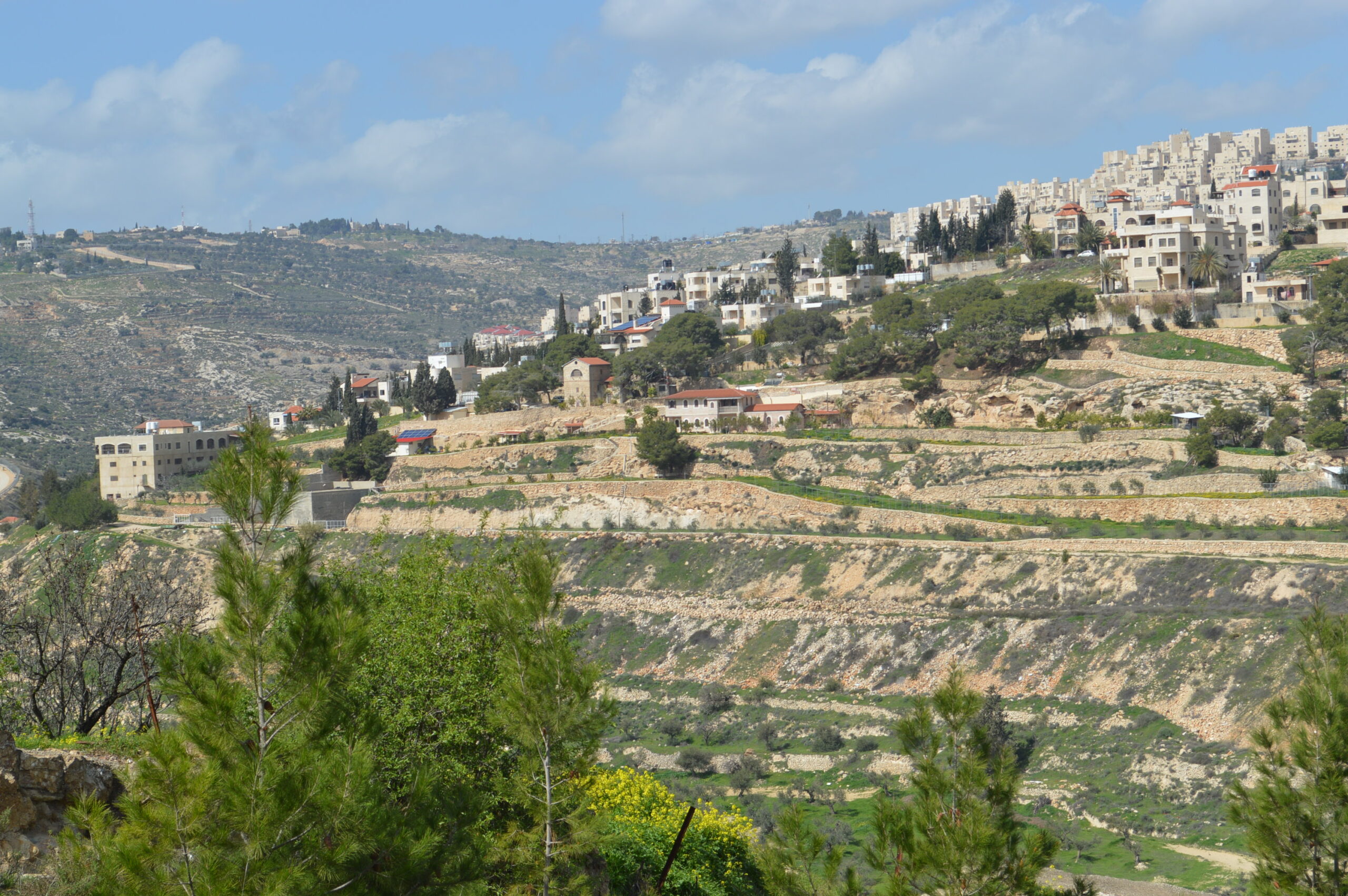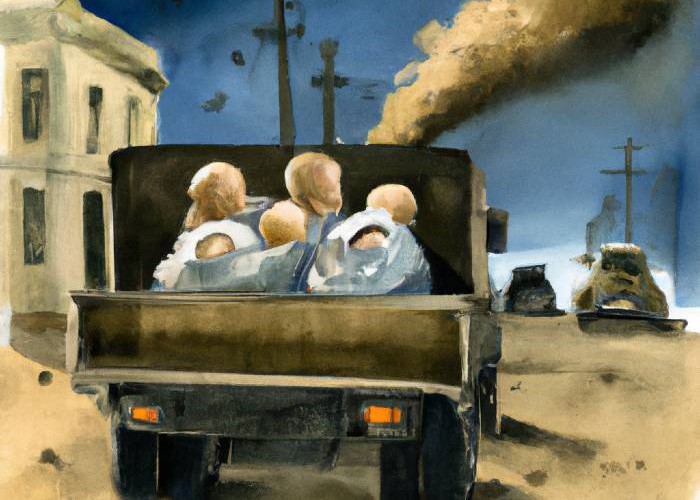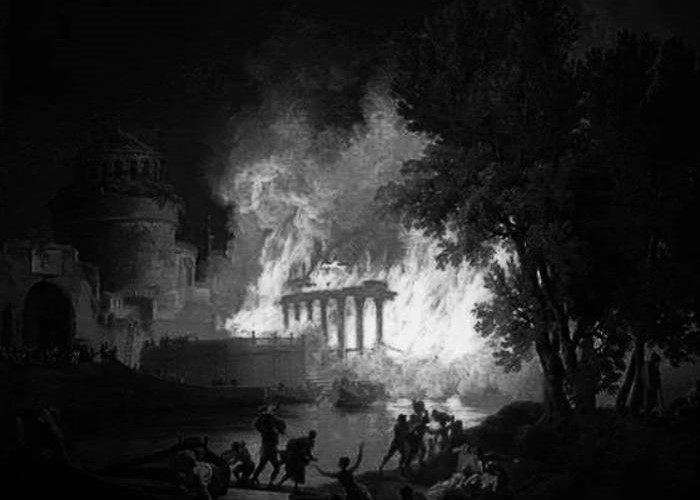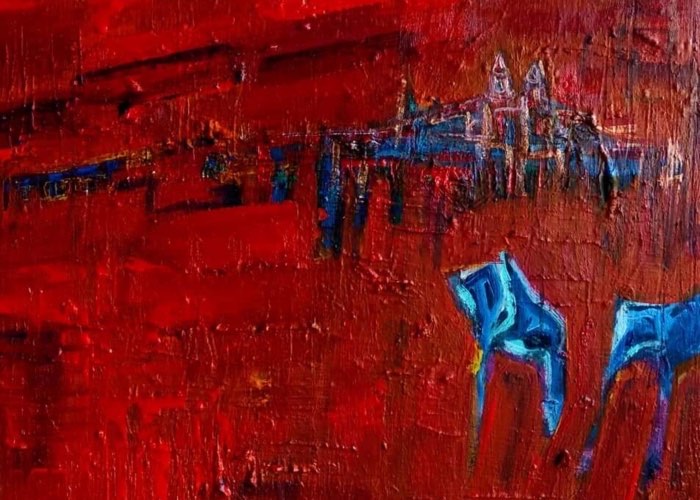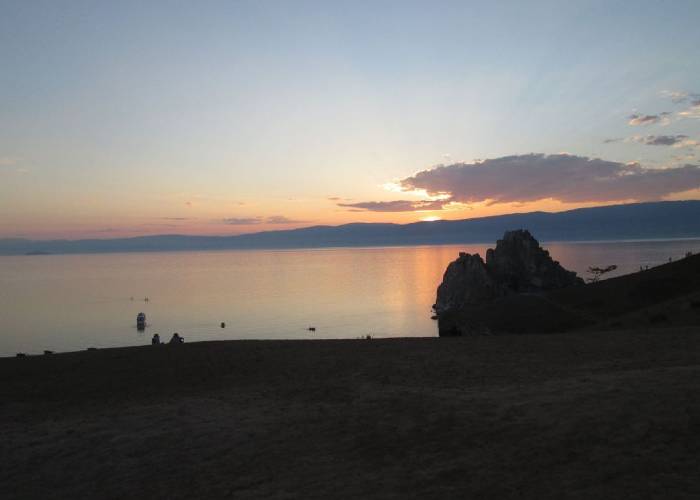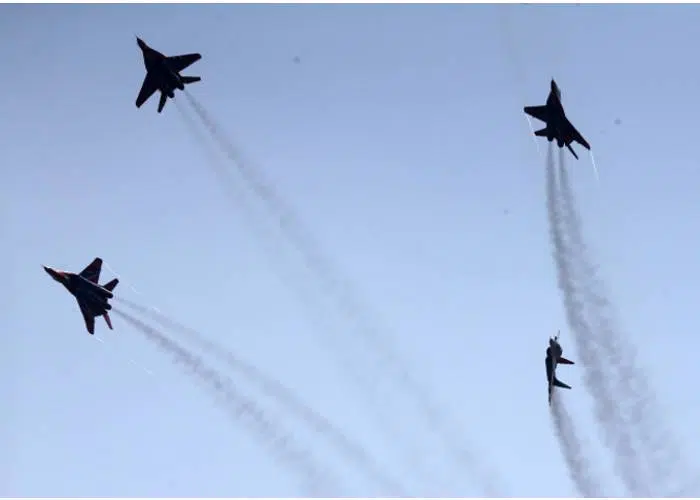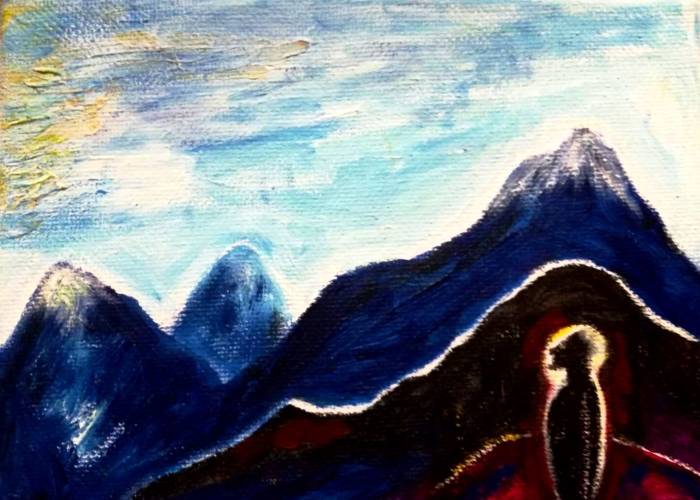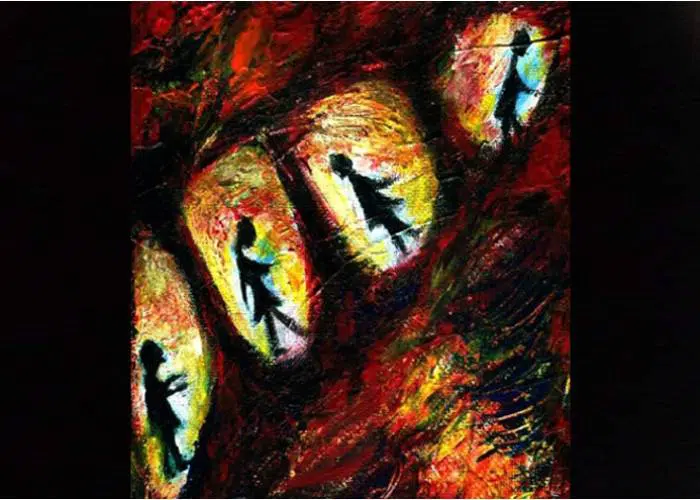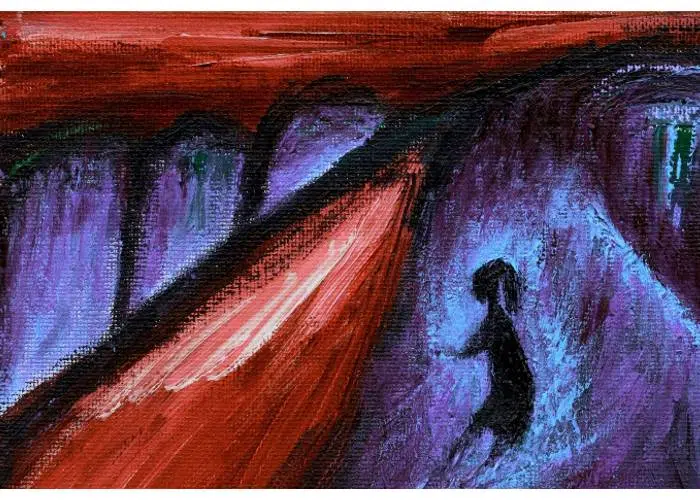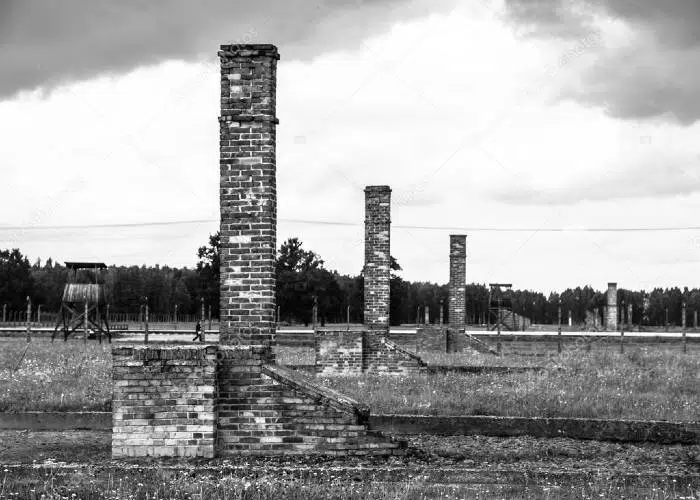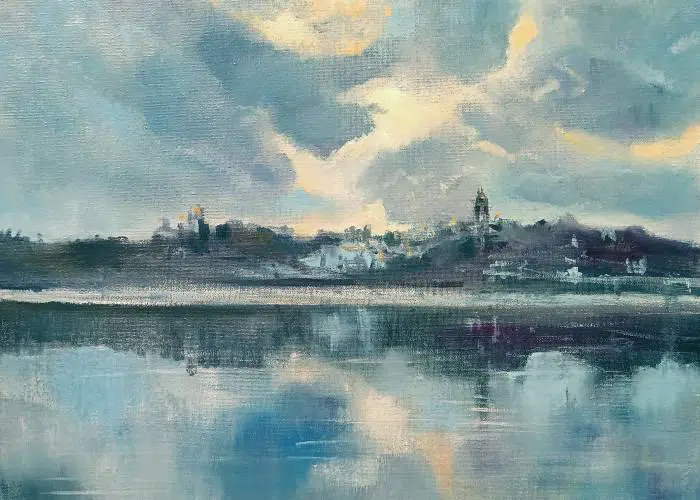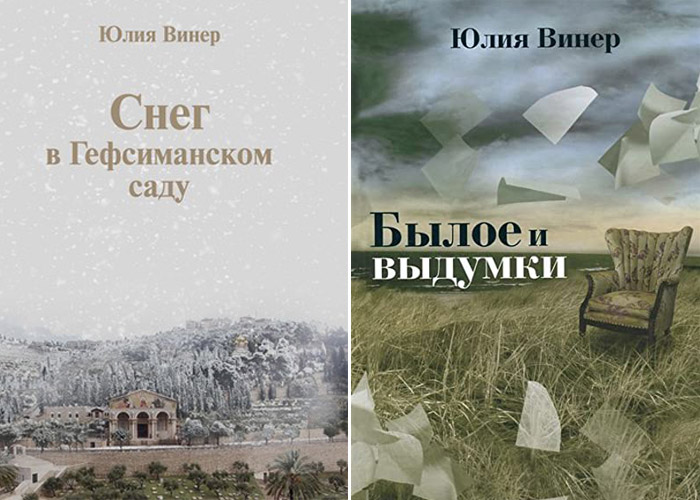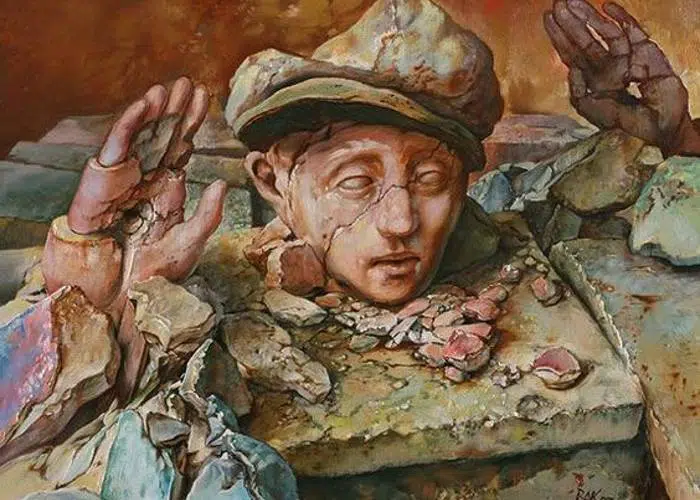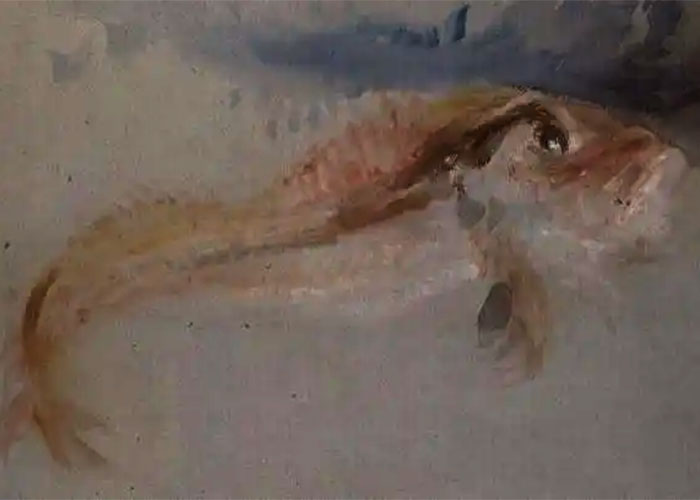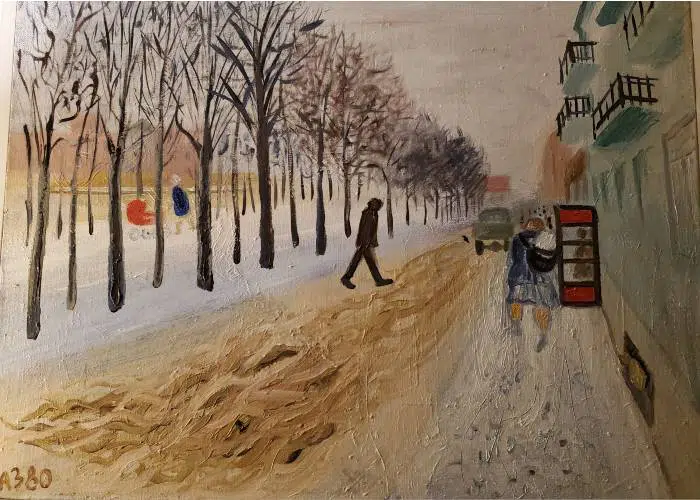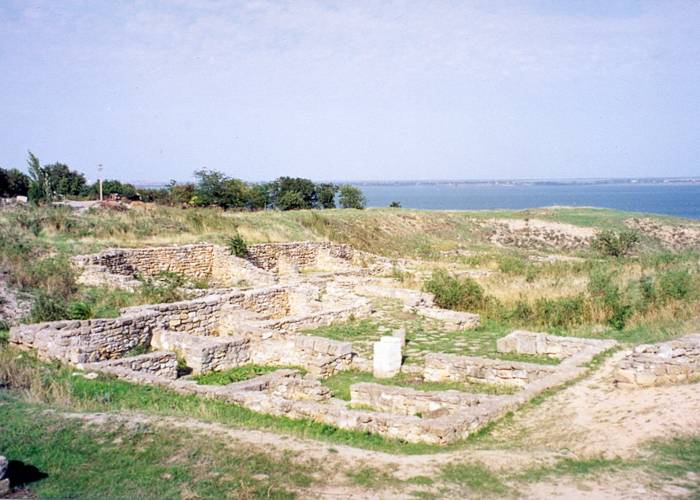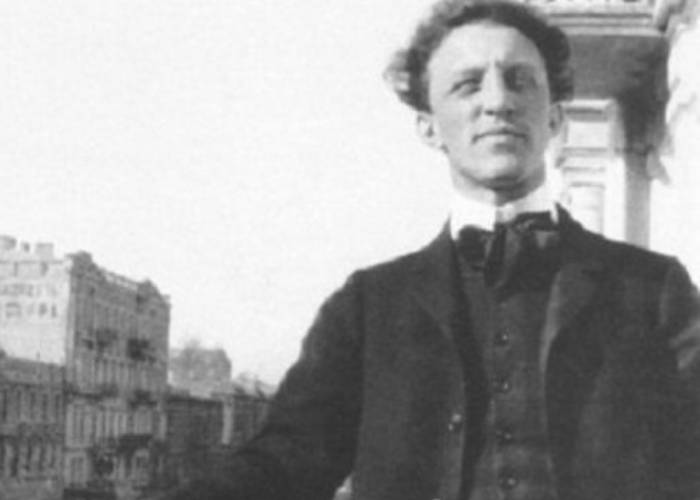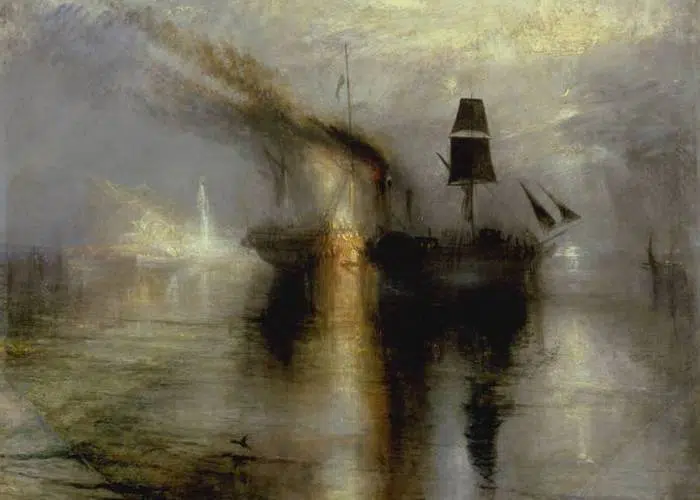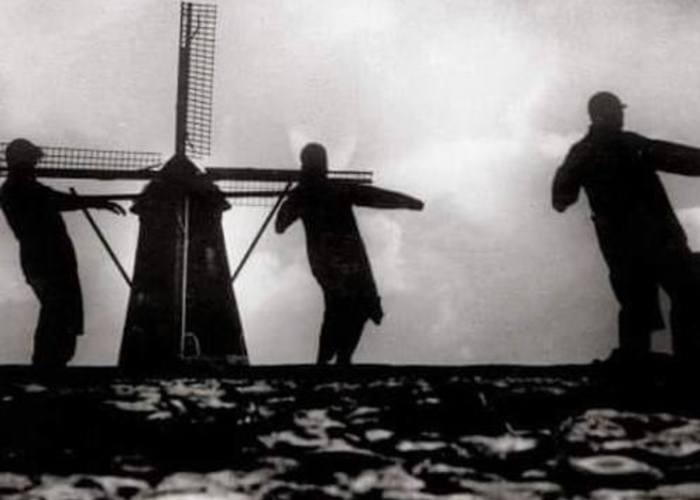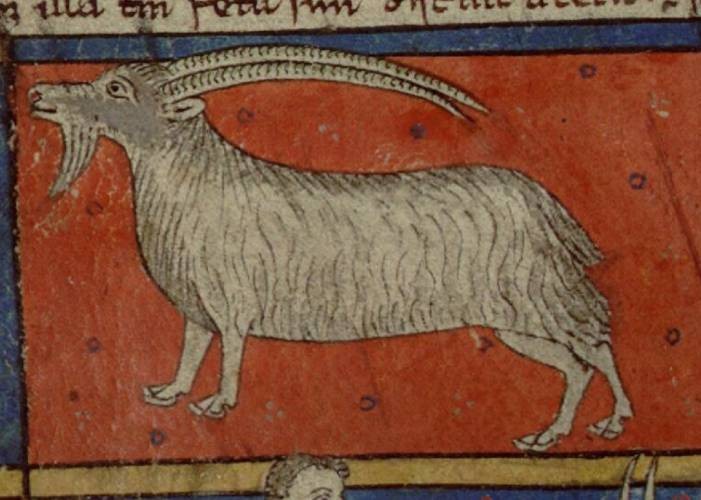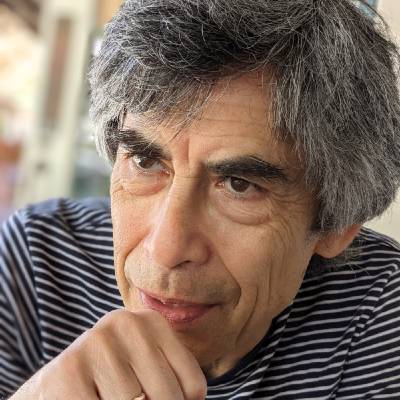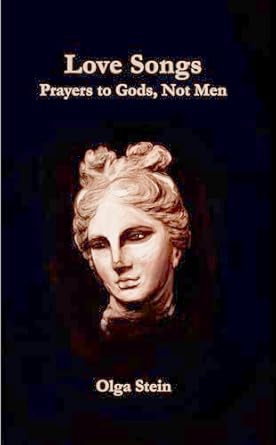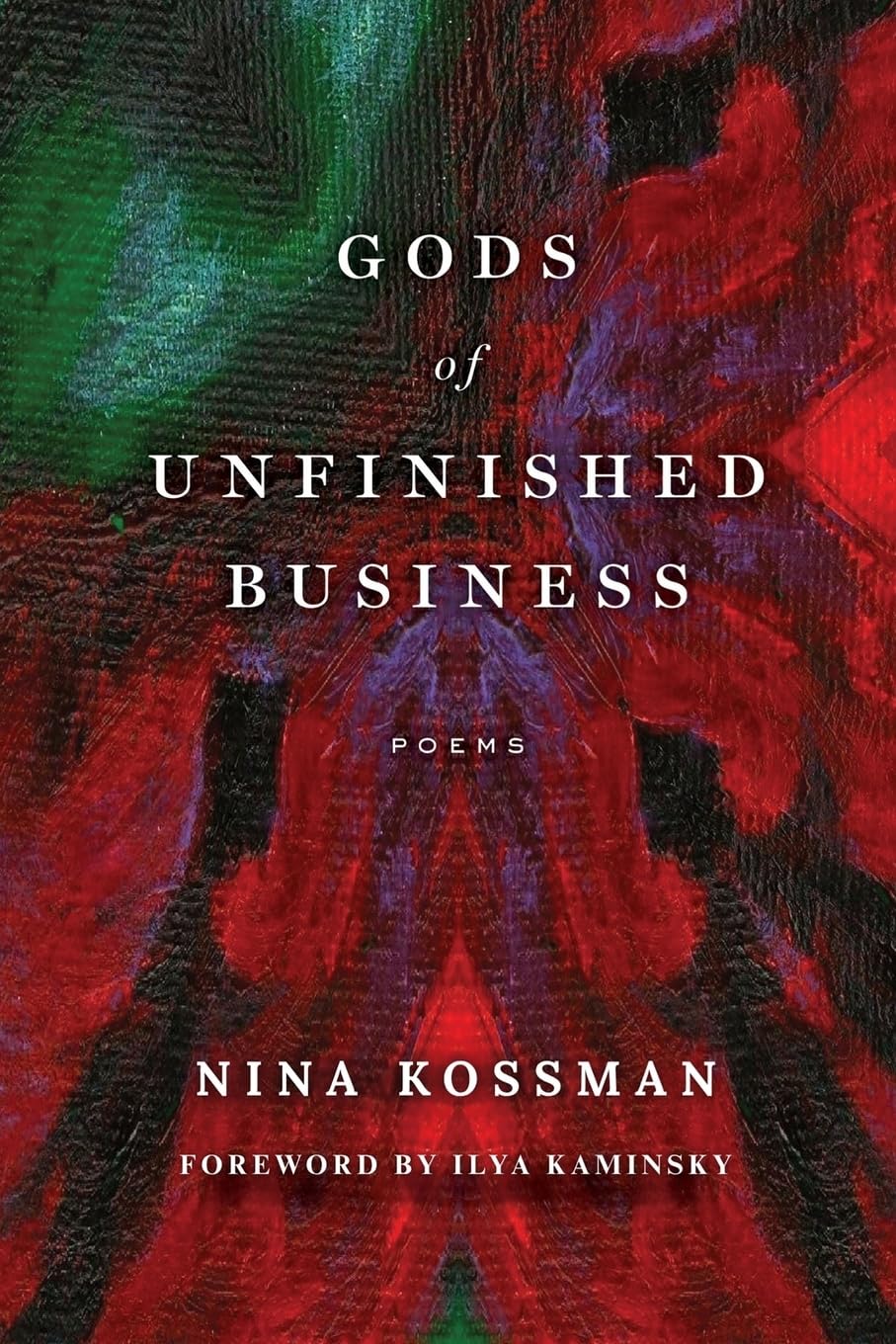«Они обитают на вершинах холмов и, завидев человека издалека, могут отличить охотника от путника. Точно так же Христос возлюбил высокие холмы — то есть пророков и апостолов, как сказано в Песне песней: „Вот Он идет, скачет по горам, прыгает по холмам“ (2:8)».
Бестиарий. Английская версия рукописи Бодлеянской библиотеки, Оксфорд, M.S. Bodley 764. Перевод и вступление Ричарда Барбера. Boydell Press, Вудбридж, 1999, стр. 54–55
Над миром летит песнь козла — траго-эдия.
Рога его — мост между зыбью и твердью.
Земля встала дыбом — оскалились горы,
к орлиным гнездовьям воздев коридоры.
Внизу грохот вод — там проходят народы;
Ковчег их потерян — завет их со смертью.
Он смотрит и смотрит в ослабшее сердце
зачеркнутым глазом из серого кварца;
Копытом уперся в скалу — различая
обманщиков, жалобщиков, книгочеев.
Вот так же Господь проникает очами
в сердца человеков сквозь круглые дверцы.
Иду и молю его: пусть я все помню,
пусть он меня любит и солнце огромно,
и солнце огромно но с привкусом стали,
и в соли морской его флаги и снасти.
Козел, безусловно, он образ Христа,
рога его — крест: он Отцом нам дарован.
Не им ли посажен шиповник олений?
Не он ли Аккада чешуйчатый гений?
Не он ли скукожен в извилинах мозга?
Вот он уже маг — сучковат его посох;
Вот он уже принц и несут на подносах
всех подданных слезы, их жемчуг и деньги.
А в остов его, когда кончится битва,
запрячут крик цифр перестук алфавита.
Оттуда — из черепа, пепла и пыли
я помню — нас вынули и сотворили,
чтоб в мятной долине плясать легкокрыло,
где каждый прыжок нам зачтут за молитву.
*
Bestiary, 1: Goat Song (τραγῳδία)
«They dwell in the heights of the hills and when they see men a long way off, they can tell whether they are hunters or travellers. In the same way Christ loved the high hills, that is the prophets and Apostles, as the Song of Songs says: ‘Behold, He cometh leaping upon the mountains, skipping upon the hills’ [2:8]” Bestiary, an English version of the Bodleian Library, Oxford M.S. Bodley 764, Translated and introduced by Richard Barber, The Boydell Press, Woodbrigde. 1999, p. 54-5.
The goat’s song is soaring. Look up: trago-oidia.
His horns are a bridge from the firm to the roiling.
The earth rears up, baring the teeth of its peaks
and hoisting the vales to the nests of the eagles.
Below, waters roar — it’s the passage of peoples;
they’ve a covenant with death, and their ark was destroyed.
He patiently peers into faltering hearts
with his struck-through eye, as if made of grey quartz;
His hoof firmly set on precipitous slates,
he picks out all the bookworms, deceivers, complainers.
The same way the Lord’s seeing eye penetrates
the hearts of all men through their little round doors.
Imploring I come: make it so I remember
all things, so he loves me, so the sun grows in splendor,
humongous and splendid, but tasting of steel,
its ensigns and rigging in sea-salt encrusted.
The goat is a veritable image of Christ,
his horns are a cross, he’s our gift from the Father.
He is — isn’t he? — ancient Akkad’s scaled genie;
He’s planted deer roses all fragrant and sunny;
He’s hiding, curled up, in the folds of the brain.
And then he’s a magus, and gnarled is his cane;
And then he’s a prince, and the slaves bring him trays
with tears of his subjects, their pearls and their pennies.
They’ll put in his corpse, when the battle is over,
the rattle of letters, the mumble of numbers.
That’s where – from his skull, from its dust, ash and lint
we’re pulled and created to dance easy-winged,
to jump and cavort in the valley of mint
where each of our leaps and turns counts as a prayer.


